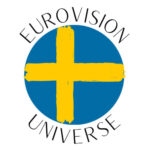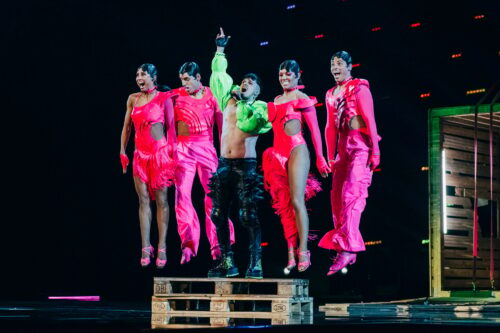photo credits: EBU/Sarah Louise Bennett/Corinne Cummings
Finland
After the lunch break, it is time for a lot of energy: Finland. As expected, Käärijä wears the green bolero jacket we know so well. He is accompanied by four dancers wearing pink. The show starts with Käärijä in a huge wooden box, climbs on top of a couple of pallets and sings there before he goes to the floor to continue his performance. We can at least say Käärijä’s performance spots a lot of energy.
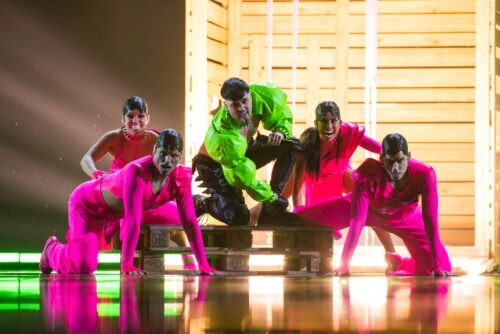
With Käärijä’s rehearsal, we saw all the participants in the first semifinal rehearse. It is time to continue with the second semifinal.
Denmark
Reiley’s performance is cleverly designed with a revolving structure that showcases three different colored rooms as he passes through doorways, utilizing the LED floor and projected graphics to special effects. The visuals range from swirling clouds to hearts and emojis, creating an atmosphere that gives the performance a dreamy feel. It’s very much in line with Gen Z sensibilities according to Eurovision.tv. Reiley himself is wearing pink, a colour we saw before today.
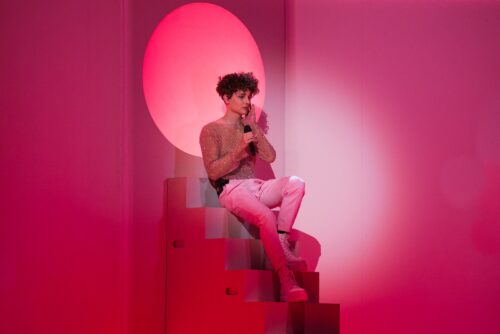
Armenia
Brunette is wearing a white dress with black sewings. She starts her performance on a sloped structure that is put upright. The structure has blue and pink swirls projected on it. The graphics and lightning change halfway as the song is changing it’s tempo. Brunette leaves the sloped structure, the stage is quite white with white squares in the background. Eurovision.tv speaks of strong vocals.
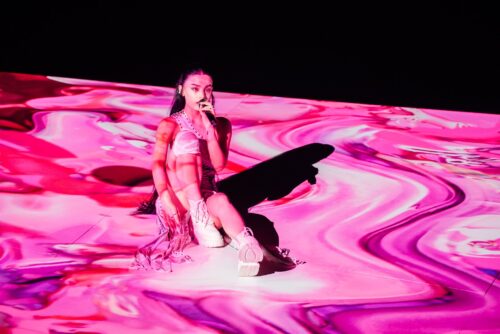
Romania
Yellow is the colour when we talk about Romania. Yellow suits, a yellow jacket and even yellow Pikachu socks! Theodor Andrei starts off with only a guitar on an empty stage. In the second half of the song, that all changes with much more energy. There is a dancer on stage as well. The end of the presentation seems to be quite dramatic, although eurovision.tv does not give more details about it.
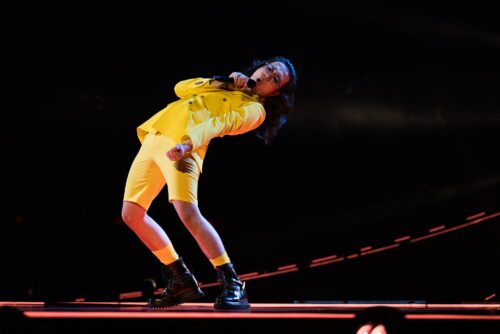
Belgium
Belgium surprises with a completely different outfit than he had in the national final. Gustaph wears a white suit and a white hat, and a pink blouse. Gustaph has his own flight of stairs, which he intensively uses. He is supported by three backing vocals who play a main role in the entire show. He has a LED backdrop of vogueing, drag queens. A dancer also has a role in the act.
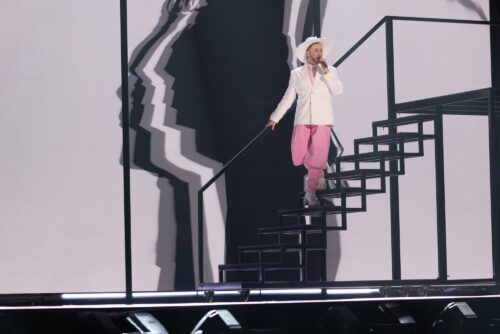
Cyprus
Eurovision.tv mentioned being impressed by Andrew’s vocal capacities. Andrew is wearing a black sleeveless vest. There’s an exciting energy in the way this song gradually intensifies from its opening note to an even more explosive conclusion. The LED background alternates between serene waterfalls and fiery flames. The floor has smoke and four banks of flames.
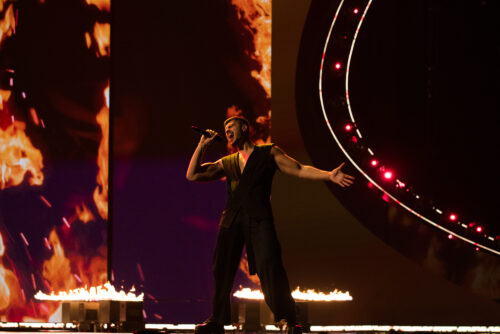
in collaboration with Eurovision Artists
